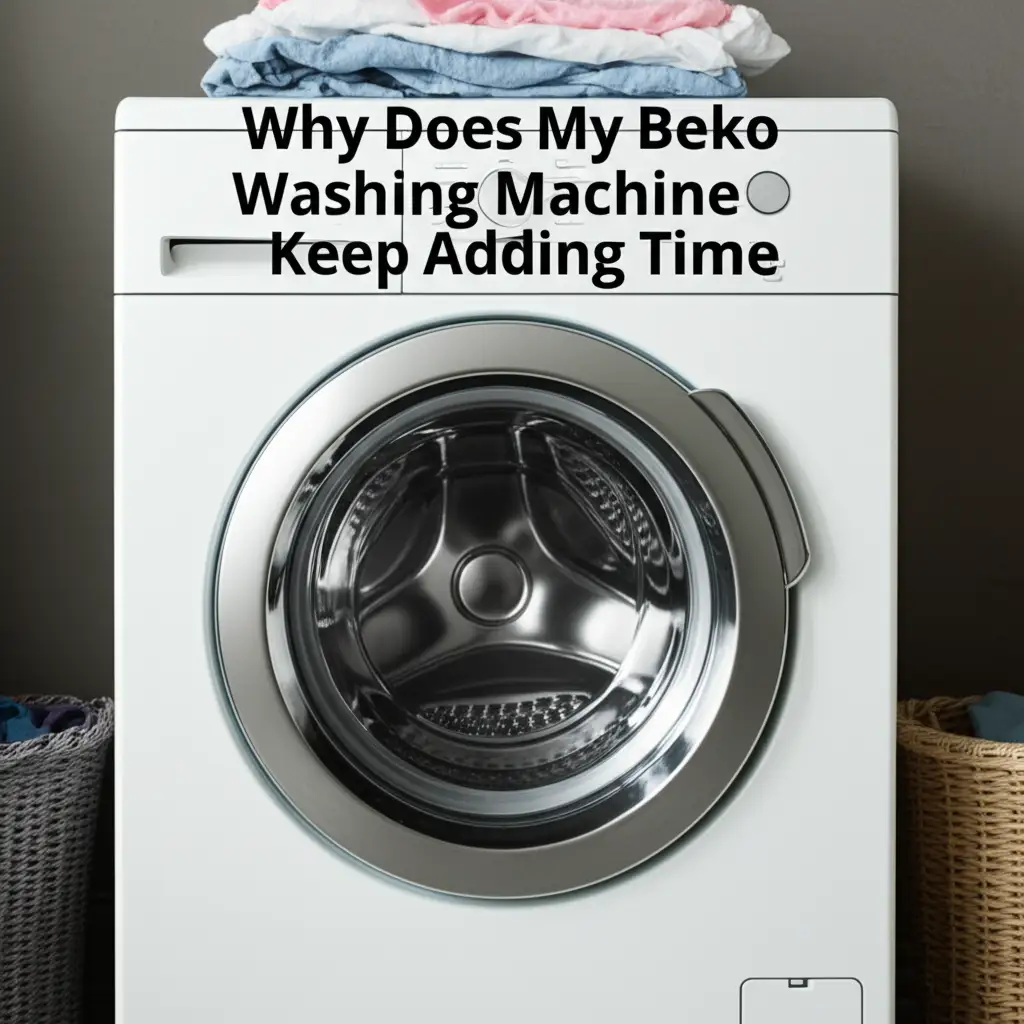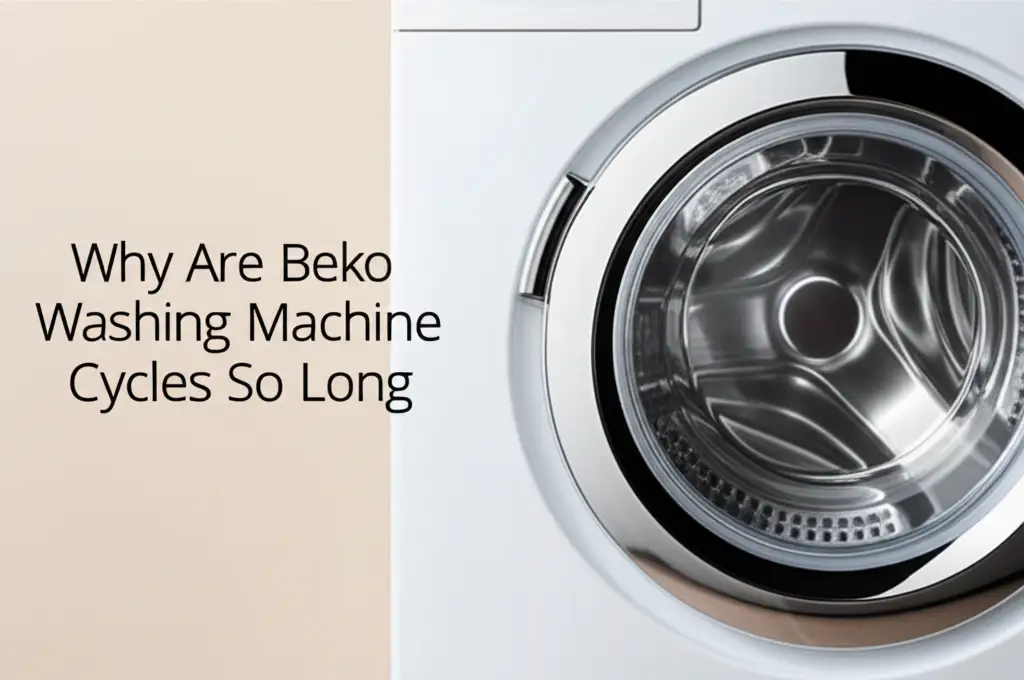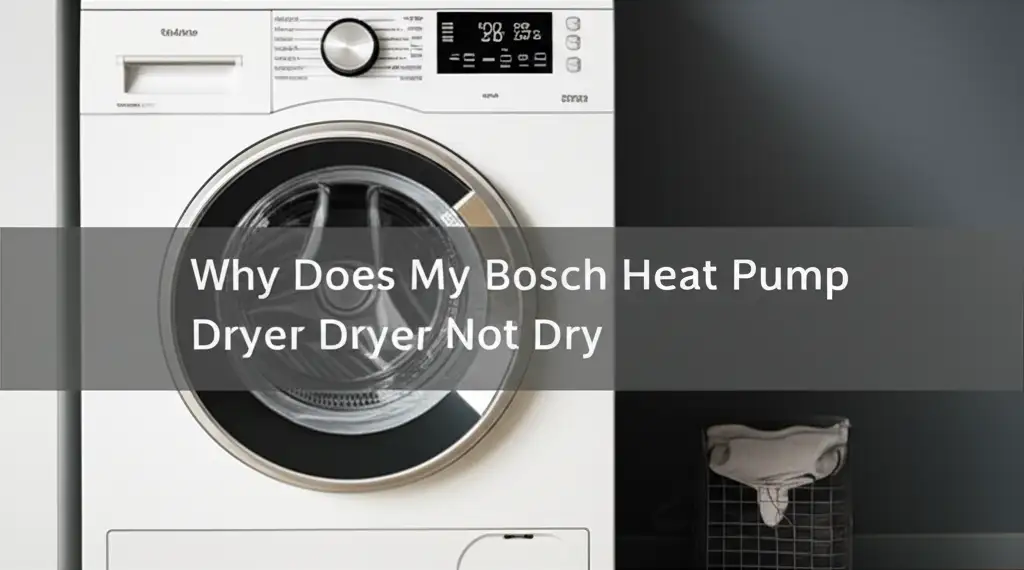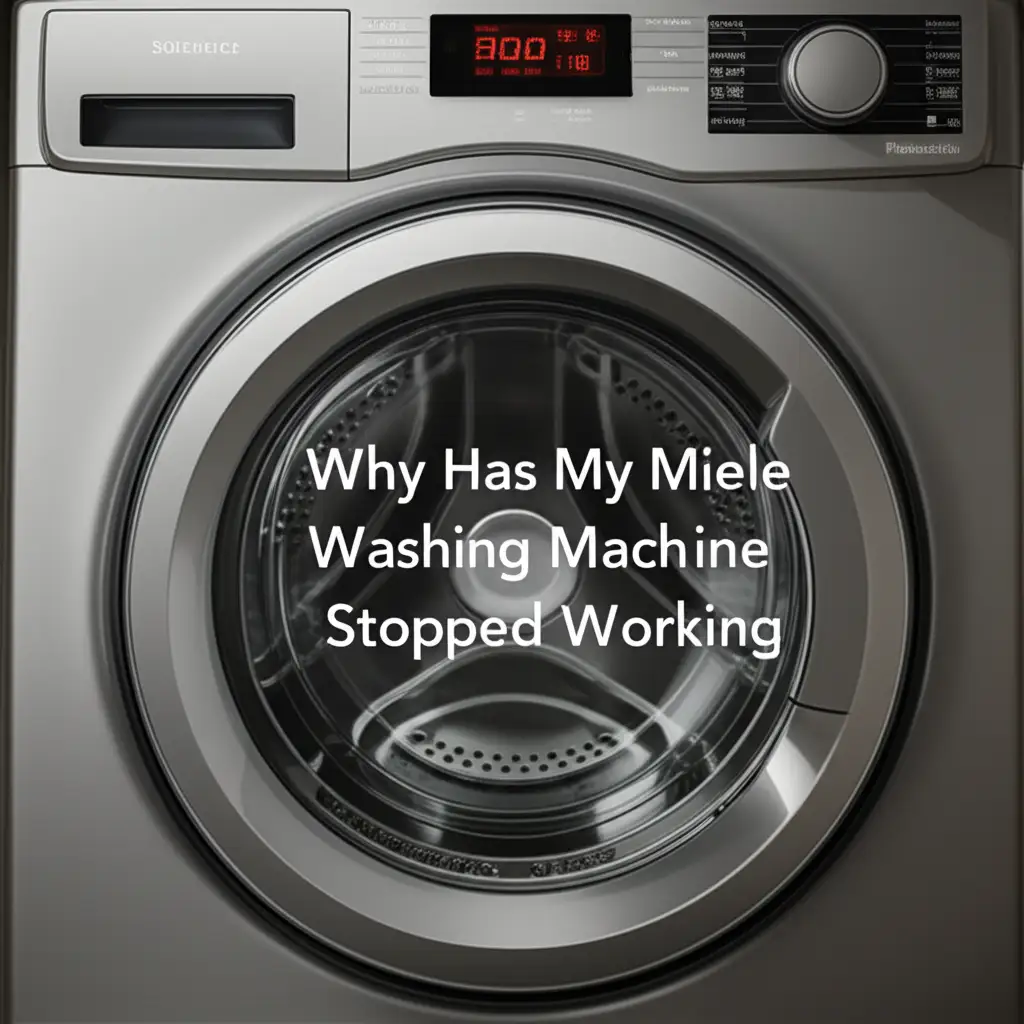· Todd Martin · Home Appliances · 21 min read
How To Turn Off Miele Washing Machine Beeping W1
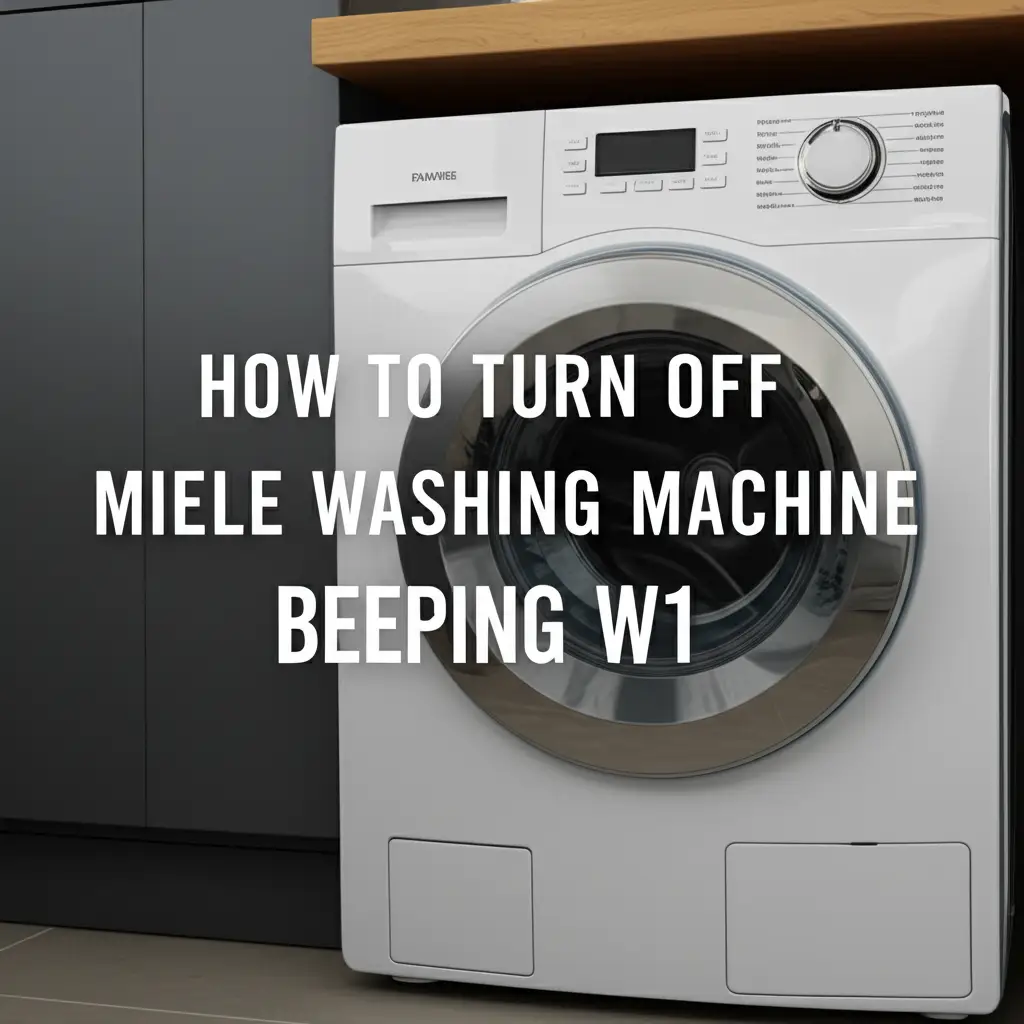
Silence Your Miele W1 Washing Machine Beeping
Is your Miele W1 washing machine sounding an alarm when you least expect it? That persistent beeping can disrupt the peace of your home. You are not alone; many Miele owners wish for quieter laundry cycles. We will help you understand the different beeps your Miele W1 makes. This guide gives you clear steps to turn off Miele washing machine beeping W1, whether it is an end-of-cycle signal or an error warning.
We will cover everything from simple volume adjustments to troubleshooting more complex beeps. You will learn how to access settings and what to do if the beeping indicates a problem. By the end of this article, you will enjoy a quieter laundry experience. Say goodbye to unwanted noise and hello to peace and quiet in your home.
Takeaway
- Access the Miele W1 settings menu to adjust or disable acoustic signals for cycle completion.
- Address error or warning beeps by identifying and resolving the underlying fault code.
- Consult your Miele W1 user manual for model-specific instructions on sound settings.
- Perform regular maintenance to prevent issues that might trigger error beeps.
Concise Answer
You can turn off Miele washing machine beeping W1 by accessing the settings menu. Look for “Acoustic signal,” “Buzzer,” or “Signal tone” options. Adjust the volume or turn off end-of-cycle beeps there. For error beeps, identify the fault code on the display and troubleshoot the specific issue to silence the alarm.
Understanding Miele W1 Beeping Signals
Your Miele W1 washing machine uses sound to communicate. These sounds are not random. They tell you about the machine’s status or if a problem exists. Knowing what each beep means helps you decide how to respond. You can silence the sound once you understand its purpose.
Miele washing machines have different types of acoustic signals. The most common one is the end-of-cycle beep. This sound tells you your laundry is ready. Another type is a warning beep. This might indicate an open door or a slight imbalance. Finally, there are error beeps. These are usually louder and more persistent. They point to a significant issue that needs your attention.
Let us explore these signals in more detail. This understanding forms the basis for effective troubleshooting. It also helps you manage your machine’s sound output.
End-of-Cycle Beeps
Your Miele W1 typically beeps when a wash program finishes. This signal alerts you to unload the clothes. The machine usually plays a series of short tones. Some models offer different melodies or durations. You can often customize or disable this specific signal.
This feature is helpful if you are busy and need a reminder. However, it can be annoying if your laundry room is near a living area or bedroom. Many users prefer a quiet notification or no sound at all. Miele provides options within the machine’s settings to control this. We will cover how to change these settings later in this guide.
Warning and Fault Beeps
Warning beeps are different from end-of-cycle alerts. They usually indicate a minor issue that needs your attention. For example, your Miele W1 might beep if the detergent drawer is not closed properly. It might also beep if the load is unbalanced. These beeps often stop once you correct the problem.
Fault beeps, however, are more serious. They signal a malfunction or a critical error. The machine usually displays an error code alongside these beeps. For instance, a persistent beep with a specific code might indicate a water intake issue or a drainage problem. You must address these faults promptly. Ignoring them can lead to poor wash results or machine damage. For example, if your machine is not filling with water, it will beep to alert you. Similarly, issues like the machine not spinning properly or a leaking bottom can trigger beeps. The beeping stops once you fix the underlying problem.
Adjusting End-of-Cycle Tones on Miele W1
Many Miele W1 owners want to reduce or eliminate the end-of-cycle sound. This is often the easiest beep to control. Miele designs its W1 washing machines with user-friendly settings. You can usually find options for acoustic signals within the main menu. These settings allow you to customize the volume. You can also turn off the sound completely.
Accessing these settings often requires a few button presses. It is not hidden deep within complex menus. Your user manual is the best resource for exact steps. However, I can provide a general guide. Most Miele W1 models follow a similar logic for menu navigation. You will primarily use the display and navigation buttons.
Let us walk through the typical steps. This process focuses on the programmable options for cycle completion. You can achieve a quieter laundry experience with these simple adjustments.
Accessing the Settings Menu
First, make sure your Miele W1 washing machine is off. It should not be running a cycle. Press the “On/Off” button to ensure it is in standby mode. Next, look for the “Settings” or “Program” button on your display. Some models use symbols like a wrench or a gear. Press and hold this button for a few seconds. This usually takes you into the machine’s configuration menu.
Once in the settings menu, you will see various options. Use the navigation arrows or the rotary selector to scroll through them. Look for entries related to “Tones,” “Acoustic signal,” “Buzzer,” or “Signal volume.” The exact wording varies by model. Select the appropriate option to enter the sound settings.
Adjusting Volume and Disabling Sounds
Inside the sound settings, you will find options to change the end-of-cycle beeps. You might see a volume control. This allows you to set the loudness level. You can often choose from “Off,” “Low,” “Medium,” or “High.” To turn off Miele washing machine beeping W1 completely for cycle completion, select “Off.”
Some Miele W1 models also allow you to choose different signal types. You might have options for a “Melody” or a “Standard tone.” You can even set a “Delayed start” or “Finish in” time, allowing the machine to finish quietly during specific hours. Make your selection and then confirm your choice. This usually involves pressing an “OK” or “Set” button. Once confirmed, the changes save. Your Miele W1 will now follow your new sound preferences for future cycles.
Remember, these settings apply to the end-of-cycle signal. They do not typically affect error or warning beeps. Those signals are designed to alert you to critical issues. You must address those issues separately. We will discuss troubleshooting error beeps in the next section.
Silencing Error and Warning Beeps on Your Miele W1
Error and warning beeps are different from end-of-cycle chimes. They exist for safety and to protect your machine. Therefore, you cannot simply turn off Miele washing machine beeping W1 that signals a problem through the standard settings menu. The machine beeps because it detects an issue. To stop these beeps, you must fix the problem.
Miele W1 washing machines are intelligent. They display error codes on their screens. These codes are vital clues. They tell you exactly what is wrong. Understanding these codes is the first step to silencing the persistent sound. You need to consult your Miele user manual for a full list of error codes. However, I can provide common examples.
Once you identify the error, you can take corrective action. Many issues are simple to resolve. Some may require a professional. Your goal is to eliminate the condition causing the beep. The sound will stop once the machine senses the problem is gone.
Identifying Error Codes
When your Miele W1 beeps due to a fault, look at the display. You will see a letter-number combination. This is your error code. Common codes include:
- “Water intake/drain fault” (e.g., F10, F11): This means the machine is not getting enough water or cannot drain properly. Check your water supply hoses. Make sure they are not kinked. Also, inspect the drain hose for blockages. Sometimes, cleaning the pump filter helps. You can find out more about cleaning your washing machine filter which is crucial for drainage.
- “Door locked/unlocked fault” (e.g., F220): This indicates the door is not latching correctly or cannot unlock. Ensure the door is fully closed. Check for obstructions. If the door does not unlock or open after a cycle, there might be a latch issue or residual water.
- “Sudsing fault” (e.g., F53): Too much detergent can cause excessive suds. This triggers a beep. Use less detergent in future washes. Make sure you use suitable detergent for Miele machines. Using any detergent might not be ideal.
- “Imbalance fault” (e.g., F63): The machine detects an unbalanced load. This is common with heavy items or small loads. Redistribute your laundry evenly. The machine might also be banging when spinning if unbalanced.
Once you know the code, you can find specific troubleshooting steps. Your Miele W1 user manual is the best place to start. It provides detailed explanations for each code.
Resolving the Underlying Issue
After identifying the error code, take action to fix it.
- Power Cycle: For many issues, a simple reset can work. Turn off your Miele W1 machine. Unplug it from the power outlet for 10-15 minutes. Plug it back in and turn it on. This can clear temporary glitches. If your machine has no power at all, check the circuit breaker.
- Check Connections and Hoses: Ensure water inlet hoses are not kinked or blocked. Check the drain hose for obstructions. Make sure water valves are fully open.
- Inspect Filters: Clean the pump filter regularly. A clogged filter restricts drainage and causes beeps. Refer to your manual for filter location and cleaning instructions.
- Redistribute Load: If an imbalance error occurs, open the door. Manually redistribute the laundry inside the drum. Try running a spin cycle again.
- Detergent Use: Ensure you are using the correct amount and type of detergent. Miele machines are efficient. They require specific detergent formulations.
- Door Latch: Inspect the door latch mechanism for damage or obstructions. Ensure it clicks shut firmly.
Once you resolve the issue, the error code usually disappears. The persistent beeping will stop. If the error persists after trying these steps, you might have a more complex problem. This leads us to the next step: when to consider professional help.
Navigating the Miele W1 Service Menu for Acoustic Settings
Beyond the standard user settings, Miele washing machines often have a hidden “Service Menu” or “Technical Settings” menu. This menu offers more advanced diagnostic and configuration options. It is not typically for everyday use. However, some Miele W1 models might allow you to adjust specific acoustic signals here. This includes beeps that are not found in the regular user settings.
Accessing the service menu usually involves a specific button combination or sequence. This sequence is often not published in the standard user manual. It is primarily for Miele service technicians. Attempting to enter this menu without clear instructions can lead to unintended changes. You might accidentally alter machine behavior. However, if you are confident and know the correct steps for your model, it might offer a solution for persistent beeps.
Always exercise caution when entering service menus. Make sure you know exactly what setting you are changing. Record the original setting before making any modifications. This way, you can revert if needed.
Steps to Access (General Guide)
Please note: The exact procedure for accessing the service menu varies significantly between Miele W1 models and software versions. The following is a general guide. It may not work for every machine. Always search for specific instructions for your exact Miele W1 model number.
- Machine OFF, Plugged In: Ensure your Miele W1 washing machine is turned off but still connected to power.
- Specific Button Combination: Many Miele appliances require you to hold down one or more buttons while turning the machine on. Common combinations include:
- Holding down the “Start/Stop” and “Option” buttons simultaneously while pressing “On/Off.”
- Holding a specific program button (e.g., “Cottons”) and “Start/Stop” together.
- Using a specific sequence of button presses within a short time frame.
- Entering Service Menu: If successful, your display might show “P” followed by numbers (e.g., P01, P02) or a different set of diagnostic options. This indicates you are in the service menu.
- Navigating to Acoustic Settings: Once in the service menu, you will need to navigate through its options. Use the program selector dial or arrow buttons. Look for options like “Acoustic,” “Buzzer,” “Sound,” or specific “Test Programs” that might include sound tests.
- Adjusting or Disabling: Within the acoustic settings, you might find options to adjust the volume of certain internal beeps. You might even find an option to disable sounds not available in the user menu. Make small adjustments and test.
Caution: Changing settings in the service menu without proper knowledge can affect machine operation. It could potentially void your warranty. If you are unsure, do not proceed. Contact Miele service instead. I am not recommending you access this menu unless you have specific, confirmed instructions for your model.
Resetting Settings if Needed
If you accidentally change a setting in the service menu, you might need to reset your machine. Some Miele W1 models have a factory reset option. This is usually within the service menu itself. Or, it might be a specific button combination.
Alternatively, you can try a hard reset. Turn off the machine and unplug it from the wall. Leave it unplugged for at least 30 minutes. This fully drains any residual power. Plug it back in and turn it on. This can sometimes revert settings to their defaults.
Always refer to official Miele service documentation or a qualified technician if you encounter problems. Misuse of the service menu can cause more issues than it solves. It is always better to be safe when dealing with appliance electronics.
Troubleshooting Persistent Beeping Issues on Miele W1
Sometimes, your Miele W1 washing machine might keep beeping even after you have checked the basic settings and common error codes. This persistent beeping can be frustrating. It suggests a more complex issue or an intermittent problem. You need a systematic approach to identify the root cause. This section guides you through advanced troubleshooting.
We will look at less obvious reasons for beeping. These might include sensor malfunctions or software glitches. Addressing these issues often requires careful observation. It might also involve testing different components. Remember, the goal is to silence the beep by fixing the underlying problem. A persistent beep is a symptom, not the problem itself.
If the display is not working, troubleshooting becomes much harder. You cannot see error codes. In such cases, you might need professional help.
Sensor Malfunctions and Software Glitches
Miele W1 machines rely on various sensors. These sensors monitor water levels, temperature, motor speed, and load balance. If a sensor malfunctions, it might send incorrect data to the control board. This can trigger error beeps, even if no actual problem exists. For example, a faulty water level sensor could make the machine think it is not filling with water when it is.
- Load Sensor: Your Miele W1 uses sensors to detect the load size and balance. If these sensors are faulty, the machine might continuously try to rebalance. This can lead to persistent beeping or banging during spinning. Ensure the machine is level. Test with different load sizes.
- Door Lock Sensor: The door lock mechanism includes a sensor. This sensor tells the machine if the door is securely closed. If this sensor fails, the machine might beep. It will assume the door is open, even when it is not. This can also prevent the machine from starting. Issues like the door not opening or not unlocking are often related to this sensor.
- Software Glitches: Like any modern appliance, your Miele W1 has software. Software can sometimes develop temporary glitches. This might cause the machine to behave erratically. A persistent, unexplained beep could be due to such a glitch. A power cycle (unplugging for 10-15 minutes) often resolves these minor software issues.
If you suspect a sensor malfunction, it is best to consult the manual for diagnostic tests. Some Miele W1 models have built-in diagnostic modes. These modes can help pinpoint faulty components.
Component Checks and Cleaning
Beyond sensors, certain physical components can cause beeping if they are not working correctly. Regular cleaning and inspection are essential.
- Detergent Drawer: A blocked or dirty detergent drawer can cause issues. For example, if detergent cannot dispense properly, it could lead to sudsing problems and beeps. Sometimes, water can leak from the detergent drawer, which might also cause error signals. Clean the drawer regularly to prevent blockages. Use only the recommended detergent.
- Drain Filter and Pump: A clogged drain filter is a common culprit for drainage issues. This often triggers beeping and error codes. Regularly clean the washing machine filter. If the filter is clear but still beeping about drainage, the drain pump might be faulty.
- Water Inlet Filter: The water inlet hoses often have small filters where they connect to the machine. These can become clogged with sediment. This restricts water flow. It leads to beeps indicating a water intake problem. Check and clean these filters.
- Leveling: An unbalanced machine can vibrate excessively. This might lead to error beeps related to imbalance. Ensure your Miele W1 is perfectly level on the floor. Adjust the leveling feet as needed.
Systematically checking and cleaning these components can resolve many persistent beeping issues. If the problem persists after these checks, consider professional help. A Miele technician has specialized tools and knowledge. They can diagnose complex issues, including faulty control boards or wiring problems.
Maintaining Your Miele W1 for Quieter Operation
Regular maintenance does more than extend your Miele W1 washing machine’s life. It also helps prevent issues that cause beeping. A well-maintained machine runs smoothly. It is less likely to encounter faults. This means fewer unexpected beeps. Proactive care is key to a quiet and efficient laundry experience.
Think of it like car maintenance. Regular oil changes and tire rotations keep your car running well. The same applies to your washing machine. Small, consistent efforts can prevent big problems. These problems often manifest as annoying beeps or error codes.
This section covers essential maintenance tips. Following these tips helps ensure your Miele W1 operates silently. It also keeps it performing at its best.
Regular Cleaning and Inspection
Keeping your Miele W1 clean is crucial. Dirt, lint, and detergent residue build up over time. This can affect performance and trigger warning beeps.
- Detergent Drawer: Clean the detergent drawer weekly. Remove it completely if possible. Wash away any caked-on detergent or fabric softener residue. A clean drawer ensures proper dispensing. This prevents leaks from the detergent drawer and issues like excessive sudsing that cause beeps.
- Door Seal/Gasket: Wipe down the rubber door seal after every few washes. Mold and mildew can grow here. This causes odors and can even affect the door’s seal, potentially leading to leaks or “door open” beeps. Pay attention to the folds and creases.
- Drum Cleaning: Run a drum cleaning cycle monthly. Many Miele W1 models have a dedicated “Maintenance Wash” or “Intensive Clean” program. Use a washing machine cleaner or vinegar for this. This removes residue and prevents odors.
- Exterior: Wipe the machine’s exterior regularly. Use a soft, damp cloth. This keeps the control panel and buttons clean. A clean display helps you read error codes if they appear.
Filter Maintenance
Filters are critical for preventing beeps related to water intake and drainage.
- Drain Filter: Clean the drain filter every 3-6 months, or more often if you wash very dirty items. This filter catches lint, coins, and small objects. A clogged filter restricts drainage. This often leads to “drain fault” beeps and standing water. Your manual shows you how to access and clean this filter. Cleaning your washing machine filter is a simple DIY task.
- Water Inlet Filters: Periodically check the small filters where the water inlet hoses connect to the back of your machine. Turn off the water supply first. Unscrew the hoses and check the mesh filters. Clean any sediment or debris with a brush. This ensures proper water flow. Issues with water flow can cause your machine to beep, indicating it’s not filling with water.
Proper Loading and Detergent Use
How you load your machine and the detergent you use directly impact its performance and noise levels.
- Load Balancing: Always load your washing machine evenly. Do not overload it. An unbalanced load causes excessive vibration and often triggers an “imbalance” beep. It also puts stress on components. Overloading can lead to the machine not spinning properly.
- Detergent Type and Amount: Use high-efficiency (HE) detergent for your Miele W1. Use the recommended amount. Too much detergent creates excessive suds. This can cause a “sudsing” error beep. It also leaves residue. Miele recommends its own detergents, but you can use normal detergent if it’s HE compatible. Also, understand what ‘ADD’ means on your Miele front-loader to ensure proper detergent dispensing.
- Avoid Bleach: While some machines allow it, be cautious with bleach. Using bleach in your Miele washing machine can damage internal components over time. This might lead to unexpected errors.
By following these maintenance tips, you can significantly reduce the chances of your Miele W1 beeping due to preventable issues. You also ensure a longer lifespan for your appliance.
When to Call for Professional Help with Miele W1 Beeping
You have tried everything. You adjusted the settings. You checked for error codes and performed basic troubleshooting. Yet, your Miele W1 washing machine still keeps beeping persistently. At this point, it is wise to consider calling a professional Miele service technician. Some issues are beyond DIY repair. Attempting complex repairs without proper tools or knowledge can cause more damage. It can also void your warranty.
Knowing when to seek expert help saves you time, frustration, and potentially more money in the long run. A technician has specialized equipment. They also have access to Miele’s diagnostic software. They can accurately identify and fix problems you cannot see.
Signs You Need a Technician
Here are clear signs that it is time to call a professional for your Miele W1 beeping issue:
- Persistent Error Codes: You have a recurring error code that you cannot resolve. You followed the manual’s troubleshooting steps. You tried power cycling the machine. The code keeps reappearing. This indicates a deeper problem. It might be a faulty sensor, a control board issue, or a component failure. For example, if your machine has no power or the display is not working, it’s definitely time for a professional.
- Unknown Beeping: Your machine is beeping, but there is no error code on the display. The beeping is not an end-of-cycle sound. This “mystery beep” could indicate an internal fault that is not communicating correctly.
- Physical Damage or Leaks: You notice physical damage to components. Or, the machine is leaking from the bottom or from the detergent drawer. Beeping might be an alert for this. Such issues require expert repair to prevent water damage or electrical hazards.
- Machine Not Functioning: The beeping is accompanied by the machine not starting, stopping mid-cycle, not filling with water, or not spinning properly. This indicates a critical malfunction.
- Service Menu Changes: You entered the service menu and accidentally changed settings. Now, the machine is behaving abnormally. A technician can often revert these changes.
- Safety Concerns: You suspect an electrical issue. Or, you notice burning smells. Disconnect power immediately. Do not attempt to fix it yourself. Call a professional.
Finding a Certified Miele Technician
When your Miele W1 requires professional attention, it is best to find a Miele-certified technician.
- Miele Official Website: Start your search on the official Miele website for your region. They usually have a “Service” or “Find a Technician” section. This ensures you get a technician trained by Miele. They will use genuine Miele parts.
- Authorized Service Centers: Miele partners with authorized service centers. These centers specialize in Miele appliance repairs. They have the expertise for your specific Miele W1 model.
- Warranty: Check your machine’s warranty status. If your Miele W1 is still under warranty, repairs might be free. Using a non-authorized technician could void your warranty. When discussing with Miele support, provide your machine’s serial number. You can find it by checking where the serial number is on a Miele washing machine.
Provide the technician with as much detail as possible. Tell them the exact beeping pattern. Note any error codes. Describe what you already tried. This helps them diagnose the problem faster. Investing in professional repair ensures your Miele W1 operates safely and effectively again.
FAQ Section
Q1: Can I just unplug my Miele W1 to stop it from beeping?
A1: Unplugging your Miele W1 can temporarily stop beeping. It provides a hard reset. This can clear minor software glitches. However, it does not fix the underlying problem if it is an error beep. The beeping will likely return once you plug it back in and the machine detects the fault again. For end-of-cycle beeps, use the settings menu.
Q2: Why does my Miele W1 start beeping in the middle of a cycle?
A2: If your Miele W1 beeps mid-cycle, it usually indicates a warning or an
- Miele W1
- washing machine beeping
- turn off sound
- Miele troubleshooting
- appliance noise
- quiet wash
- laundry tips


